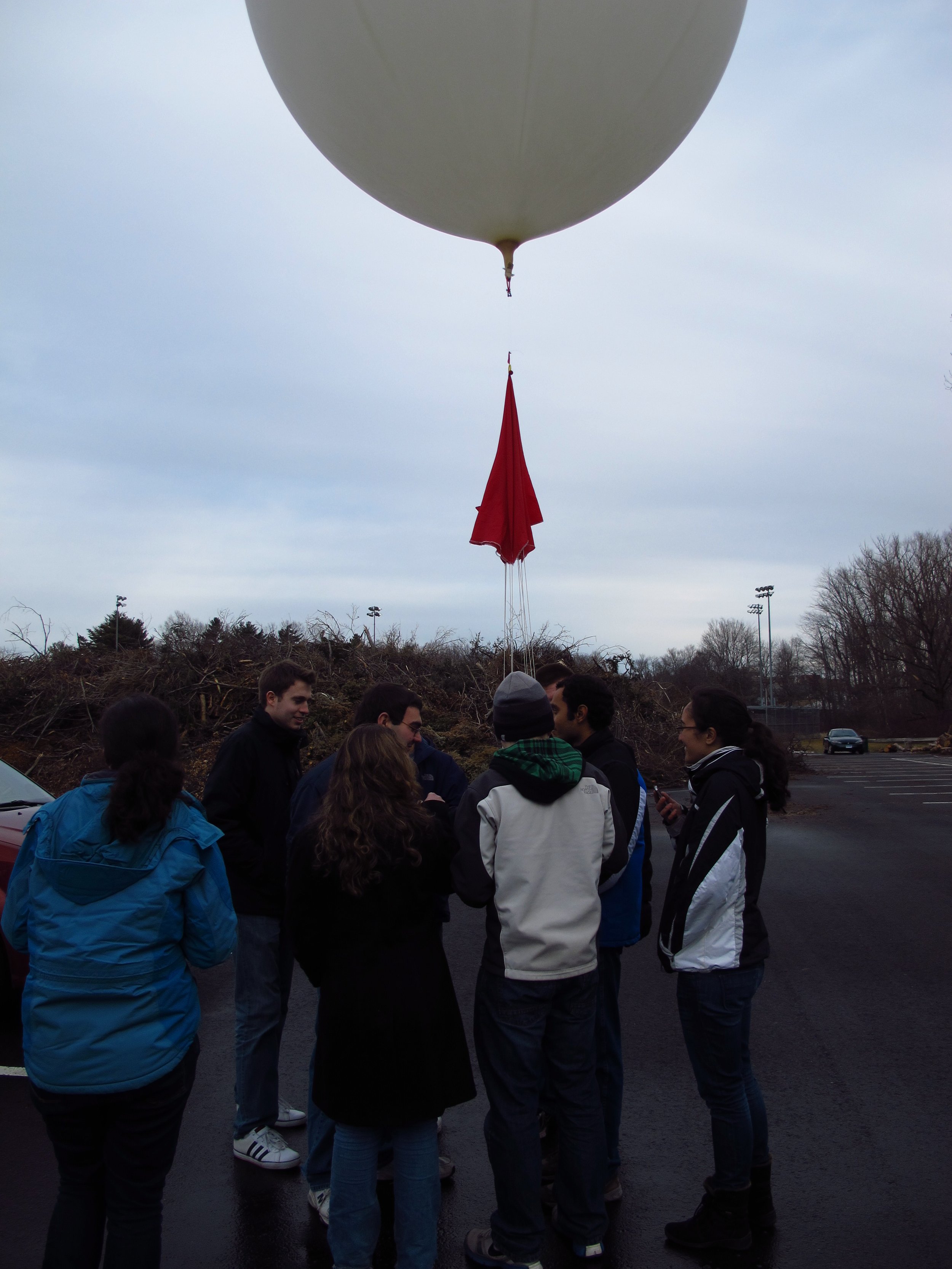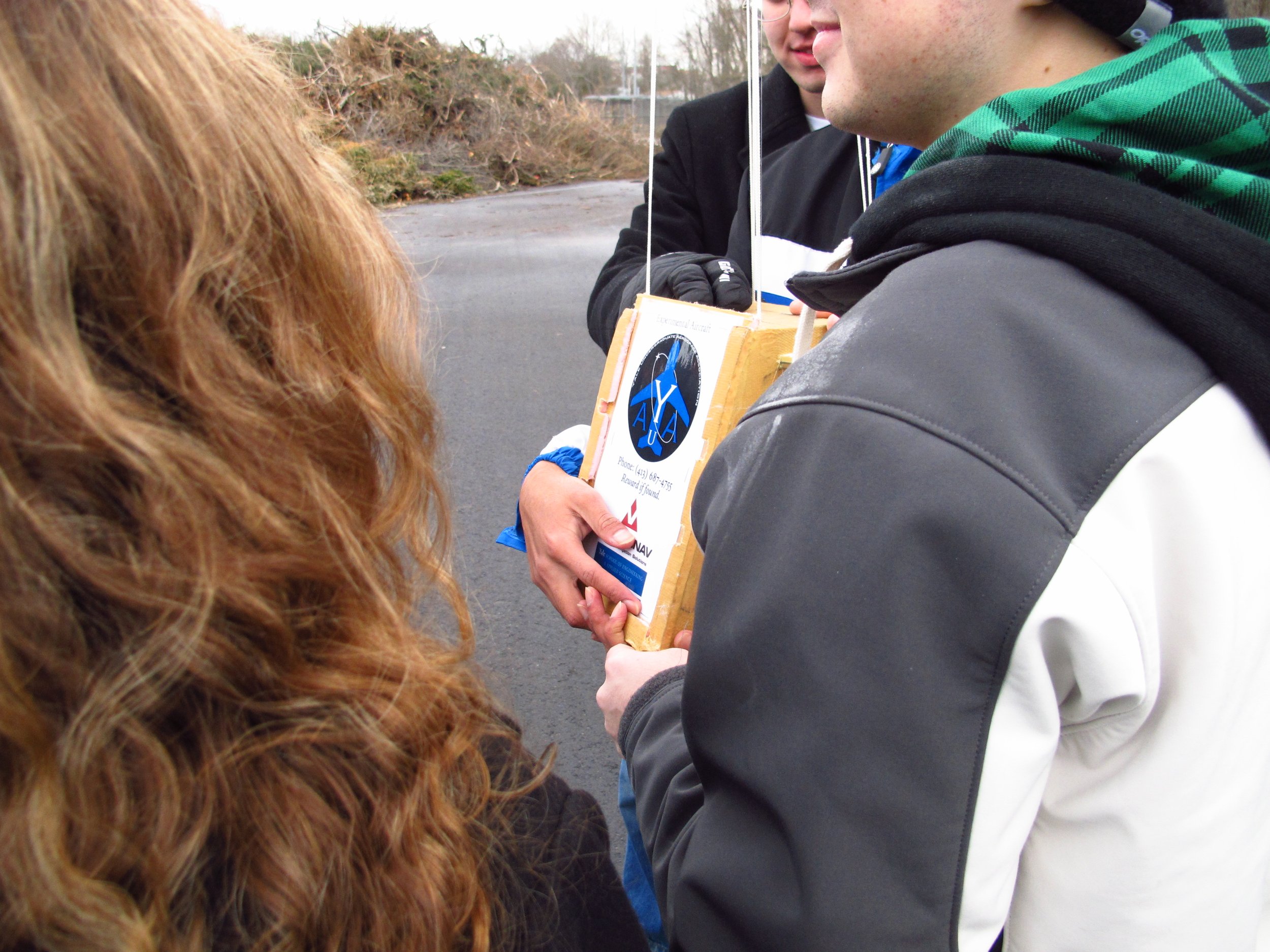Explorer
Explorer was a high-altitude aircraft designed for atmospheric exploration and research. It featured an unparalleled array of tools and capabilities compared to former YUAA balloons and launched in January 2012.
Kevlar Body
Explorer featured a state-of-the-art custom body consisting of closed-cell foam layered with Kevlar to ensure maximum strength. The sleek trapezoidal shape minimized wasted volume, and a sliding door enabled quick and easy access to the contents of the container. A shelving system provided for optimal distribution of weight, with the heaviest components (including the camera equipment and power supply) at the bottom of the craft to stabilize it during flight.
Command Center
Four digital protocols, three processors, two wireless links, and an inertial measurement unit comprised the building blocks of the Explorer’ brain – the Command Center. Neatly packaged in a 5” x 5” x 2” box built of the same closed-cell foam and Kevlar, the Command Center was designed to be modular, interfacing easily with future YUAA projects.
Nichrome Failsafe
Every contingency was considered and planned for. Our nichrome failsafe system guaranteed a quick detachment of the payload from the balloon should it become necessary. A nichrome wire responded to a remote triggering from our engineers on the ground, rapidly heating up and melting through the line. Surpassing mechanical solutions, the nichrome was also insulated from the rest of the craft to protect against heat-related damage.
Bio Bay
Explorer featured an air sampling unit called BioBay, which could be activated from the ground or automatically on a timer. It collected air samples for further investigation and analysis upon recovery of the balloon, as part of our effort to advance climate and atmospheric sciences.
Cameras
Explorer was equipped with two cameras. The first provided high-definition video, while the other supplied real-time digital photographic images to be accessed by the public on our website. Both camera lenses were insulated in case of extreme cold at high altitudes.
Inertial Measurements
Thanks to the generosity and support of VectorNav, we equipped our craft with an Inertial Measurement Unit (IMU) to measure and report Explorer’s velocity and orientation, as well as the effect of gravitational forces on it. NOTE: The Inertial sensor did not fly on the Explorer because of issues with electronic integration.
Launch
Explorer was launched on 28th January 28th 2012 from Hubbard Park near New Britain, CT. The craft was lost shortly after launch. This problem was traced to a faulty connector on the ground equipment.


